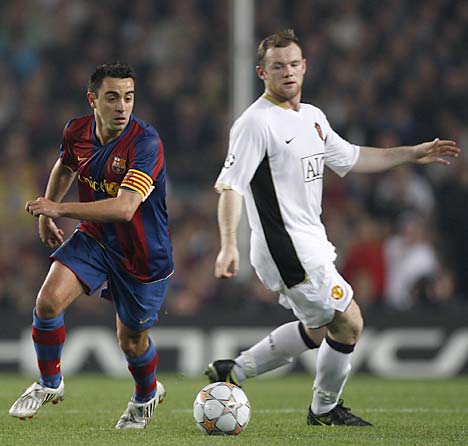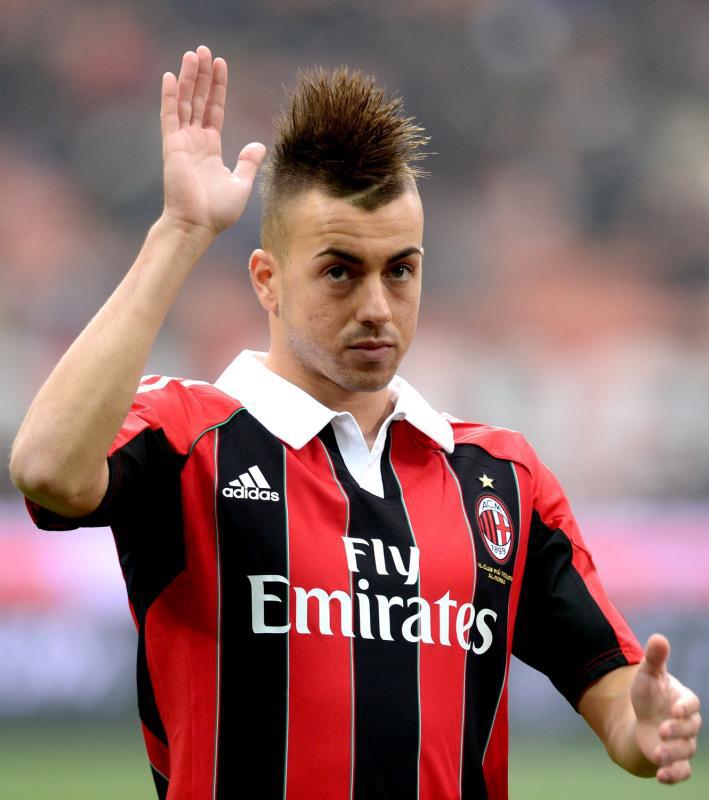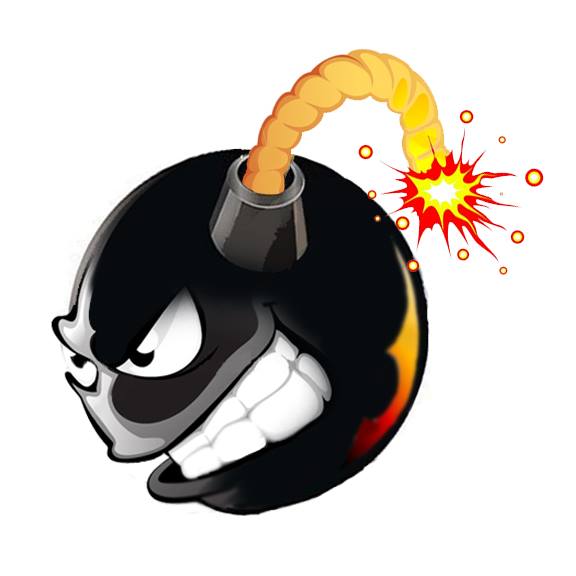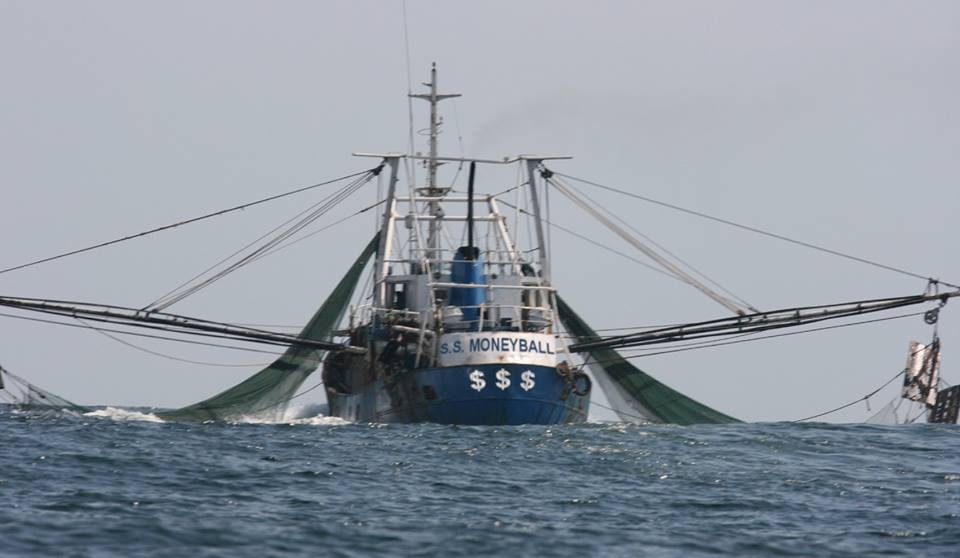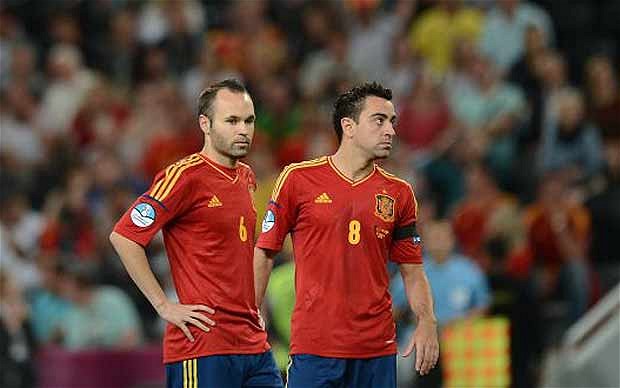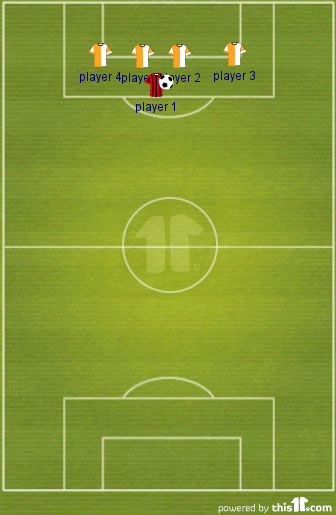Yesterday I talked about the importance of adding defensive positioning to shot location in trying to determine the actual value of any particular shot. Shots from space or behind the defensive line have a much higher likelihood of becoming a goal than shots that are closely contested. However, shots from space are exactly what most defences are designed to stop. In the modern game, whenever a ball enters the danger zone, there will be multiple defenders who close on the attacker to limit their ability to shoot or to find a teammate with a pass. Thus the question arises: how do the best teams go about creating better chances? Efficient Systems and Exceptional Players Imagine you are a coach, and are designing a system of offense for your players. In general, you know that the best shots come from that central area of the pitch, from 18 yards or closer. Thus you make a rule… 1) Most shots your team takes should be from inside central. [You can also invert this so that your defensive scheme encourages shots from outside of this area, but that’s a different article.] But obviously that’s not good enough. Most teams know and practice this principle, and the really successful teams seem to create even better shots than this. You know there are more valuable shots available to you – how do you create them? Continue reading "How Do Teams Create Better Chances?"
Month: June 2013
Walking It In To The Net

Why Good Teams Should Be Terrified of Players With Bad Passing Stats
 Those of you that follow me on Twitter may have seen me mention my general confusion at Arsene’s Wenger’s “big man” policy. For years, Wenger has purchased (or in Bendtner’s case, pushed the development of) tall forwards, while being generally happy to buy midgets for placement in the rest of the team. This is odd for a lot of reasons. The first reason is that building a speedy, zoomy, variable attack and then plonking a tall, slow guy in the center of it is strange. Granted, they are probably not that slow for tall guys, but compared to Walcott and Gervinho, Chamakh, Bendt, and Giroud are noticeably not fast. It takes attacking build-up play that can be really difficult to mark, and suddenly simplifies it dramatically for the defense. Why? Van Persie moves like a cat, but he’s only six feet tall. Adebayor was the one tall forward that worked for Arsenal, but he has a fairly unique skill set in that he’s tall, fast, has a good first touch, and is totally unplayable when he cares. Which is about 10% of the time. If Wenger was going for the Adebayor ideal, none of these other guys come close to matching up. The second thing that bugs me are the percentages. People always say “you want your forwards involved in build-up play.” This is a general truism, but it makes sense. You want all of your attacking players involved in build-up play because it moves the defense around, and makes your attack less predictable. But what if your forward isn’t very good at passing the ball? Continue reading "Why Good Teams Should Be Terrified of Players With Bad Passing Stats"
Those of you that follow me on Twitter may have seen me mention my general confusion at Arsene’s Wenger’s “big man” policy. For years, Wenger has purchased (or in Bendtner’s case, pushed the development of) tall forwards, while being generally happy to buy midgets for placement in the rest of the team. This is odd for a lot of reasons. The first reason is that building a speedy, zoomy, variable attack and then plonking a tall, slow guy in the center of it is strange. Granted, they are probably not that slow for tall guys, but compared to Walcott and Gervinho, Chamakh, Bendt, and Giroud are noticeably not fast. It takes attacking build-up play that can be really difficult to mark, and suddenly simplifies it dramatically for the defense. Why? Van Persie moves like a cat, but he’s only six feet tall. Adebayor was the one tall forward that worked for Arsenal, but he has a fairly unique skill set in that he’s tall, fast, has a good first touch, and is totally unplayable when he cares. Which is about 10% of the time. If Wenger was going for the Adebayor ideal, none of these other guys come close to matching up. The second thing that bugs me are the percentages. People always say “you want your forwards involved in build-up play.” This is a general truism, but it makes sense. You want all of your attacking players involved in build-up play because it moves the defense around, and makes your attack less predictable. But what if your forward isn’t very good at passing the ball? Continue reading "Why Good Teams Should Be Terrified of Players With Bad Passing Stats"
Why Are German Clubs So Damned Good At Shooting?
There’s a stat I’ve looked at before that I’ve dubbed SoTPAR which stands for Shots on Target versus Par. You can find my original article about it from January here. Anyway, I started doing research today to revisit it now that the season is done. I’ll have a much larger article or two on its use and implications in the coming days, but for the moment I wanted to make a quick post on what’s happening in the Bundesliga right now. This is the sort for the English Premier League. Delta is how many more shots on target each team averages above the 3 year average for their leagues. As you can see, Manchester United are really good at putting shots on target, while QPR were truly dreadful (and were last season too). Anyway, the EPL 3-year average for this was 32.5%, so that’s how I calculated the expected. 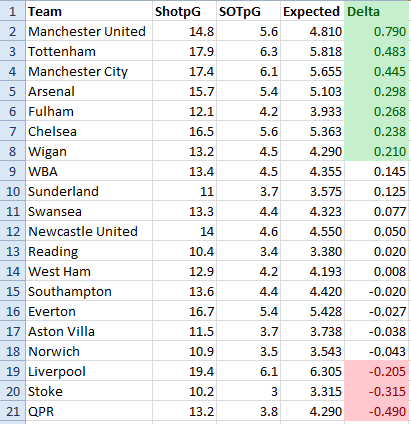 Continue reading "Why Are German Clubs So Damned Good At Shooting?"
Continue reading "Why Are German Clubs So Damned Good At Shooting?"
Serie A Attacking Transfer Targets – The Final Edition
I have too many guys I need to cover today for the usual preamble, at least two of whom were added by request. If you missed the first edition of Serie A analysis, you can find it here. Now let’s get to it. Name: Mauro Icardi Team: Sampdoria (now owned by Inter Milan) Age: 20 Position: Forward (Centre) Potential Buyers: SOLD! For the most part, this series has focused on players whose stats suggest they are future superstars, and who might be available for transfers. Mauro Icardi just transferred to Inter Milan, but a reader asked me to take a look at him, and who am I to deny that?
| Year | Apps | G | A | ShpG | KP | Drib | Disp | Trn | PS% | NPG/90 | Sot% |
|---|---|---|---|---|---|---|---|---|---|---|---|
| 2013 | 24(7) | 10 | 2 | 1.6 | 0.6 | 0.5 | 1.1 | 1 | 66.2 | 0.43 | 41 |
Note: An explanation for all the abbreviations is found at the end of this article When I looked at the stats initially, Icardi was on the bubble as a player the model might be interested in. Only 10 goals isn’t an amazing return from an entire season, but that NPG rate is exceptional for a 20-year-old. I’m also impressed by his Shots on Target stats. Sampdoria weren’t very good last season, but Icardi made the best of the service he got. 
Brief Notes on Forward Evaluation and Metrics
Football analysis is in a crazy time right now in that so many things are brand spanking new to the sport that things are changing week by week. I’ve only been working on player stats for about a month and have already changed my approach a couple of times after working through various problems. At some point in the future, I’ll probably write and re-write a best practices piece on what I’ve discovered doing player analysis, but today I just wanted to cover two really big things for anyone else that is interested in doing this.
Use Non-Penalty Goals
This is the big one for forwards because it levels the playing field and focuses on what really matters.
Penalties are converted at a standard 75-80% clip. Yes, there are some guys like Mario Balotelli or Matt LeTissier who are absurd at taking them and add to the rate, but the point here is that this is a very basic skill that many players have. It is also a different skill to goal scoring from open play, just as free kick taking is a special skill in and of itself. Each club likely has four guys on the pitch at any one time who can convert penalties at the standard rate, so why would you give any extra benefit to the forward who does the converting? If a defender is your penalty taker, and he scores 10 goals a season from the spot, but zero from anywhere else, does that make him good at scoring goals?
Put this another way. AC Milan win an absurd amount of penalties in Serie A every season. (Historically, their rate is a bit crazy. Berlusconi couldn’t inflate the Euro, but he’s done numbers for Milan’s ref bias.) Mario Balotelli had 12 goals in 13 matches in Milan, an incredible rate.
But!
Six of those goals were penalties. In numbers we actually care about, Balotelli had six goals in 13 matches after his move to Milan. This number, though impressive, isn’t quite as staggering as 12.
Assume for a moment Rooney and Robin van Persie convert spot kicks at the same rate. Van Persie is the penalty taker at United and converts 8 penalties to Rooney’s 0 over the course of the season. Meanwhile Rooney scores 20 open play or free kick goals and RVP scores 12. At the end of the year, they both have 20 goals. However, Rooney’s 20 would have been far harder to achieve and more valuable than RVP’s penalty-aided 20.
I understand some people care about penalty takers in terms of having a leadership or mental strength characteristic, and that’s fine. You can just tick a box on the player evaluation form that says “Takes Penalties” and be done with it. In terms of statistical analysis, you really want to filter out the penalty goals from the much harder earned goals that come via the rest of the game.
Benjamin Pugsley is the first one I saw start to slice data in this way for forwards, and deserves a lot of credit for making me aware of its importance.
Per 90
This one is fairly intuitive once you see it, but not everyone notices it at first. All “rate” stats like tackles, passes taken, completed, goals, assists, key passes, interception – basically anything that is just counted – should not be done on a Per Game basis, but instead should be done at Per 90.
The reason for this is simple: 8 out of the 11 guys in every match play 90 minutes. Thus 90 is the standard unit for football activity. That said, some players get subbed regularly, and some (especially younger players) often appear mostly as subs. How do you normalize their contributions? By dividing those contributions into 90 minute segments.
This isn’t groundbreaking – nearly every sport that is being analysed in this day and age has some sort of time normalization to help compare players. Per 90 is the correct way to do it for football/soccer.
5 Attacking Prospects from Serie A You Need to Know
 We’re in the home stretch on the attacking transfer dossiers, with Serie A the last major league I am expecting to cover this summer*. For those who are new to this series, the point is to try and unearth interesting and valuable players that are probably not household names… yet. And the conceit is that I try and do it via statistical analysis, as opposed to listening to expert opinion, or just following along with what the media says. As of this past weekend, noted expert and Match of the Day pundit Mark Lawrenson hadn’t even seen Isco play. That sort of stance on young players isn’t just avant garde, it’s bleeding edge. It takes a special kind of expert to say, “Fah, so what if he’s been in the Champions’ League. I only care when he starts playing in the Premier League.” There will be none of that here, let me assure you. If you are interested in the earlier dossiers, you can find Germany here, France part 1 and part 2, and Spain part 1 and part 2. *Unless someone decides to ship me a raft of data from any other Euro countries, in which case I will happily continue the journey of the S.S. Moneyball. The Quirks of Serie A I have mentioned that Serie A is a bit of a statistical anomaly both on Twitter and in slightly longer form. Most of Serie A’s leaders in Key Passes for the last two seasons were 29 or older, so I had some concern that the league might be a wasteland for young talent that we would be interested in. It turns out I needn’t have worried – Serie A is packed with some younger studs, provided you know where to look. Let’s start with the most talked-about young transfer target of the summer. Continue reading "5 Attacking Prospects from Serie A You Need to Know"
We’re in the home stretch on the attacking transfer dossiers, with Serie A the last major league I am expecting to cover this summer*. For those who are new to this series, the point is to try and unearth interesting and valuable players that are probably not household names… yet. And the conceit is that I try and do it via statistical analysis, as opposed to listening to expert opinion, or just following along with what the media says. As of this past weekend, noted expert and Match of the Day pundit Mark Lawrenson hadn’t even seen Isco play. That sort of stance on young players isn’t just avant garde, it’s bleeding edge. It takes a special kind of expert to say, “Fah, so what if he’s been in the Champions’ League. I only care when he starts playing in the Premier League.” There will be none of that here, let me assure you. If you are interested in the earlier dossiers, you can find Germany here, France part 1 and part 2, and Spain part 1 and part 2. *Unless someone decides to ship me a raft of data from any other Euro countries, in which case I will happily continue the journey of the S.S. Moneyball. The Quirks of Serie A I have mentioned that Serie A is a bit of a statistical anomaly both on Twitter and in slightly longer form. Most of Serie A’s leaders in Key Passes for the last two seasons were 29 or older, so I had some concern that the league might be a wasteland for young talent that we would be interested in. It turns out I needn’t have worried – Serie A is packed with some younger studs, provided you know where to look. Let’s start with the most talked-about young transfer target of the summer. Continue reading "5 Attacking Prospects from Serie A You Need to Know"
5 Hot Young Spanish Transfer Targets You Need to Know
Welcome back to another set of transfer dossiers. To those who are new to this series, you can check up on the German targets here, plus France part 1 (including Payet, Mollo, and Cabella) and and part 2 (including Ben Yedder, Alessandrini, and Boudebouz). The point of this series is to use statistics to help unearth excellent players that you might have never heard of before. By focusing on certain key metrics, it becomes possible to see players with high levels of potential well before they become stars, which in turn means you can sometimes find superb bargains in the transfer market.
The end of this piece includes a review of Liverpool target Iago Aspas, but first we’ll look at the guy who lead La Liga in Schrodinger’s Goals this season… Continue reading "5 Hot Young Spanish Transfer Targets You Need to Know"
Cristian Tello and Four More Transfer Targets from Spain You Need to Know
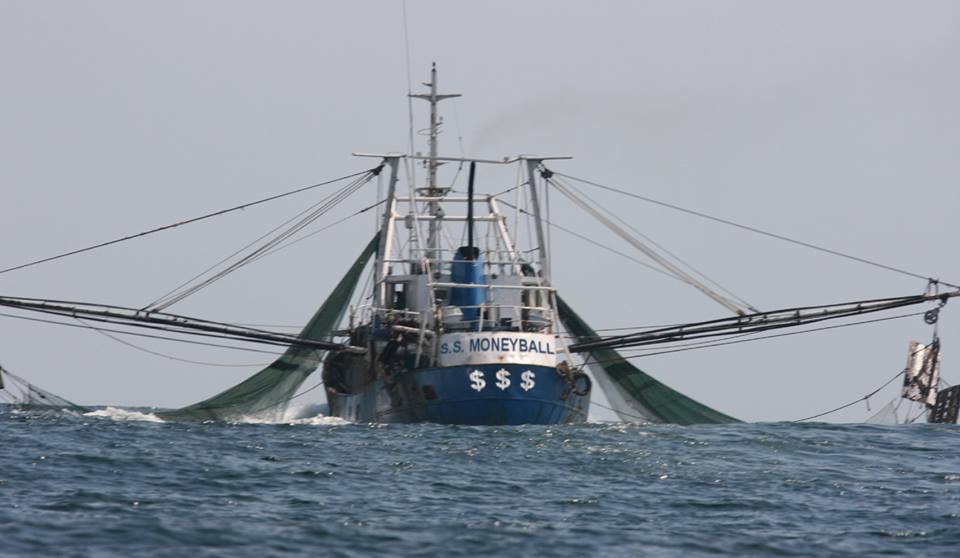 Welcome back to another edition of transfer dossiers, where I scour the internet for stats on some of Europe's most interesting and underrated players. If you are new to the series, you can find players from Germany here, France parts 1 and 2 here, and the first part of my Spanish dossiers here. Today I'm going to examine two Barcelona players that have been heating up the transfer airwaves, and then look at a Madrid forward, one of Sociedad's wonder kids, and finish with an unpolished gem from Bilbao. Here we go! Continue reading "Cristian Tello and Four More Transfer Targets from Spain You Need to Know"
Welcome back to another edition of transfer dossiers, where I scour the internet for stats on some of Europe's most interesting and underrated players. If you are new to the series, you can find players from Germany here, France parts 1 and 2 here, and the first part of my Spanish dossiers here. Today I'm going to examine two Barcelona players that have been heating up the transfer airwaves, and then look at a Madrid forward, one of Sociedad's wonder kids, and finish with an unpolished gem from Bilbao. Here we go! Continue reading "Cristian Tello and Four More Transfer Targets from Spain You Need to Know"
How Do Teams Create Better Chances?
Yesterday I talked about the importance of adding defensive positioning to shot location in trying to determine the actual value of any particular shot. Shots from space or behind the defensive line have a much higher likelihood of becoming a goal than shots that are closely contested. However, shots from space are exactly what most defences are designed to stop. In the modern game, whenever a ball enters the danger zone, there will be multiple defenders who close on the attacker to limit their ability to shoot or to find a teammate with a pass. Thus the question arises: how do the best teams go about creating better chances? Efficient Systems and Exceptional Players Imagine you are a coach, and are designing a system of offense for your players. In general, you know that the best shots come from that central area of the pitch, from 18 yards or closer. Thus you make a rule… 1) Most shots your team takes should be from inside central. [You can also invert this so that your defensive scheme encourages shots from outside of this area, but that’s a different article.] But obviously that’s not good enough. Most teams know and practice this principle, and the really successful teams seem to create even better shots than this. You know there are more valuable shots available to you – how do you create them? Continue reading "How Do Teams Create Better Chances?"
Positioning Is Everything
There’s been a lot of really good work done on shot positions recently, much of which is both clever and tremendously useful. The short recap is that shots taken close to the goal in the center of the penalty area are good. Shots taken close and wide are pretty bad (due to the angle of goal space available to shoot into), and shots taken from outside the penalty area are also pretty bad and get worse as you move further out. Obviously the location of the shot itself only tells you part of the story. Like most of the analysis we can do right now, shot location is an abstraction. It’s a valuable one, but it only accounts for half of the offense vs. defense equation. Consider for a moment, which of the following two shots is more likely to result in a goal? Continue reading "Positioning Is Everything"
Transfer Dossiers - Ben Yedder, Alessandrini, Boudebouz, and a Dude Named Saber
Greetings, and welcome to another edition of Transfer Dossiers. In this series, I take a statistical look at potentially overlooked or just plain interesting transfer targets in the major leagues. I covered the first half of the players from Ligue 1 here. They include Payet, Mollo, Cabella, and Feret, so if you are interested in them, clique ze link. [Note: I also looked at Bundesliga value targets here.] Today I’m going to look at a couple of young goalscorers, as well as an attacking midfielder that was rumoured to be on his way to Liverpool last summer, a transfer that – like most of Liverpool’s summer transfers last year – never quite happened. [Note: I have added an explanation for the abbreviations of stat categories at the bottom.] Continue reading "Transfer Dossiers - Ben Yedder, Alessandrini, Boudebouz, and a Dude Named Saber"
